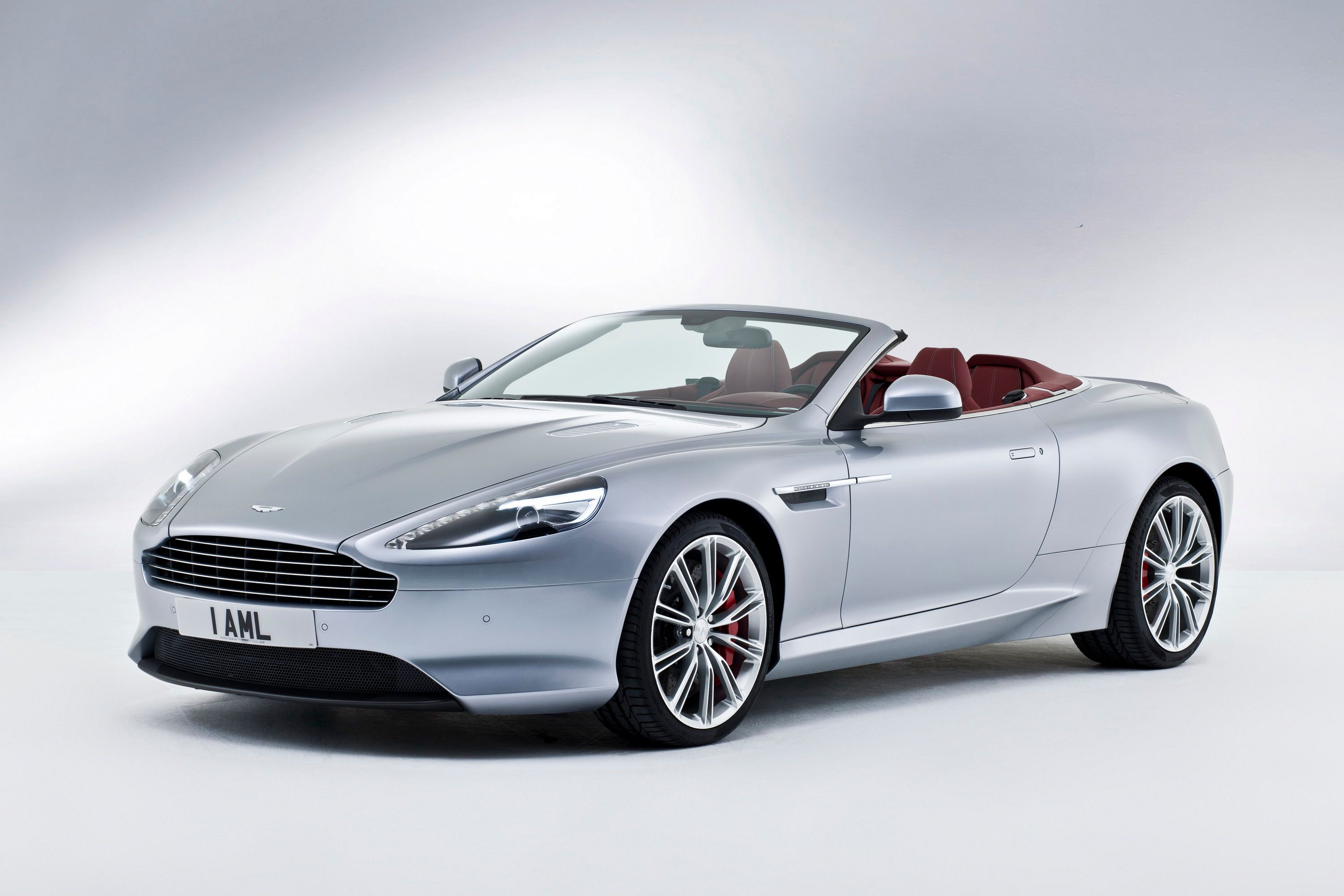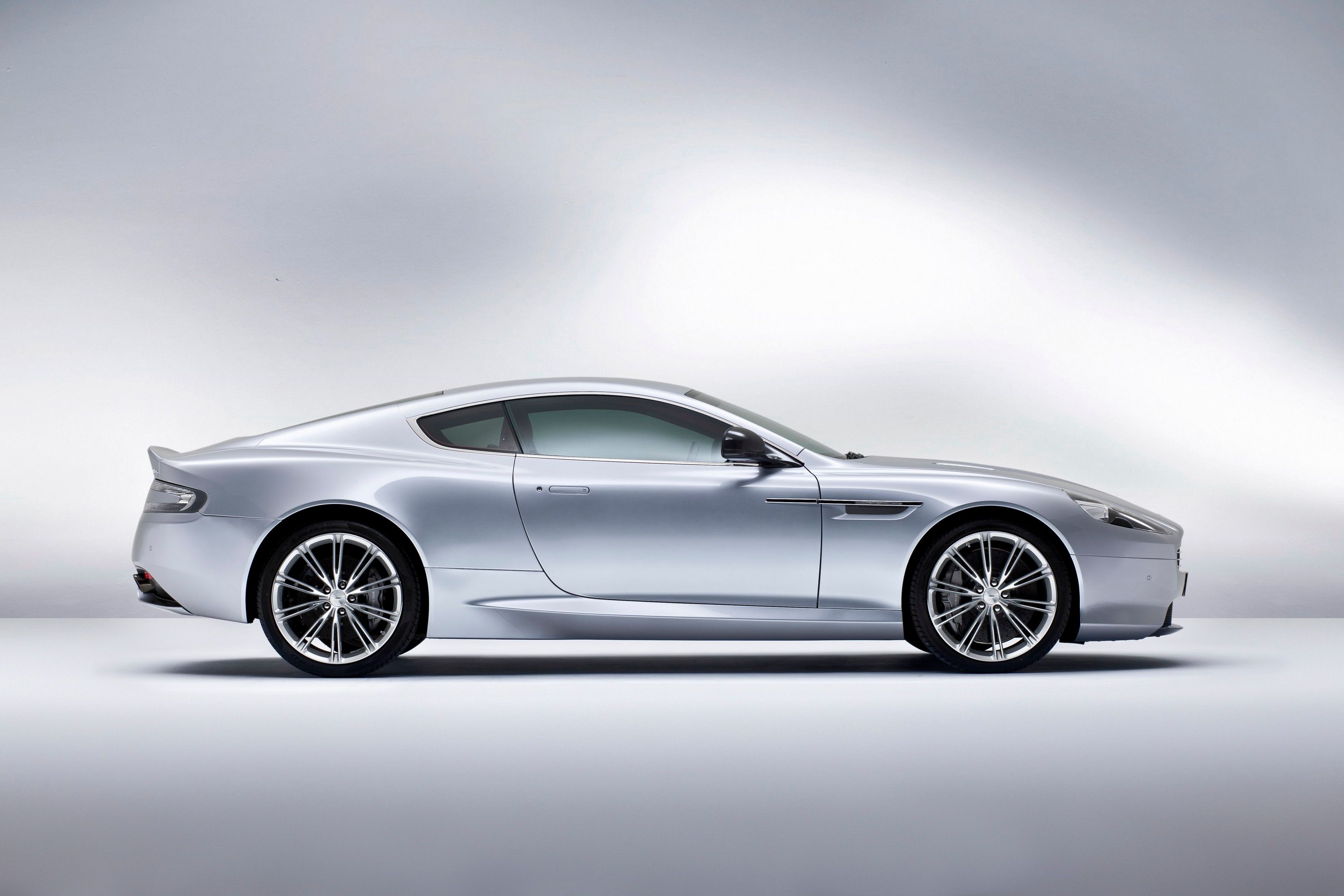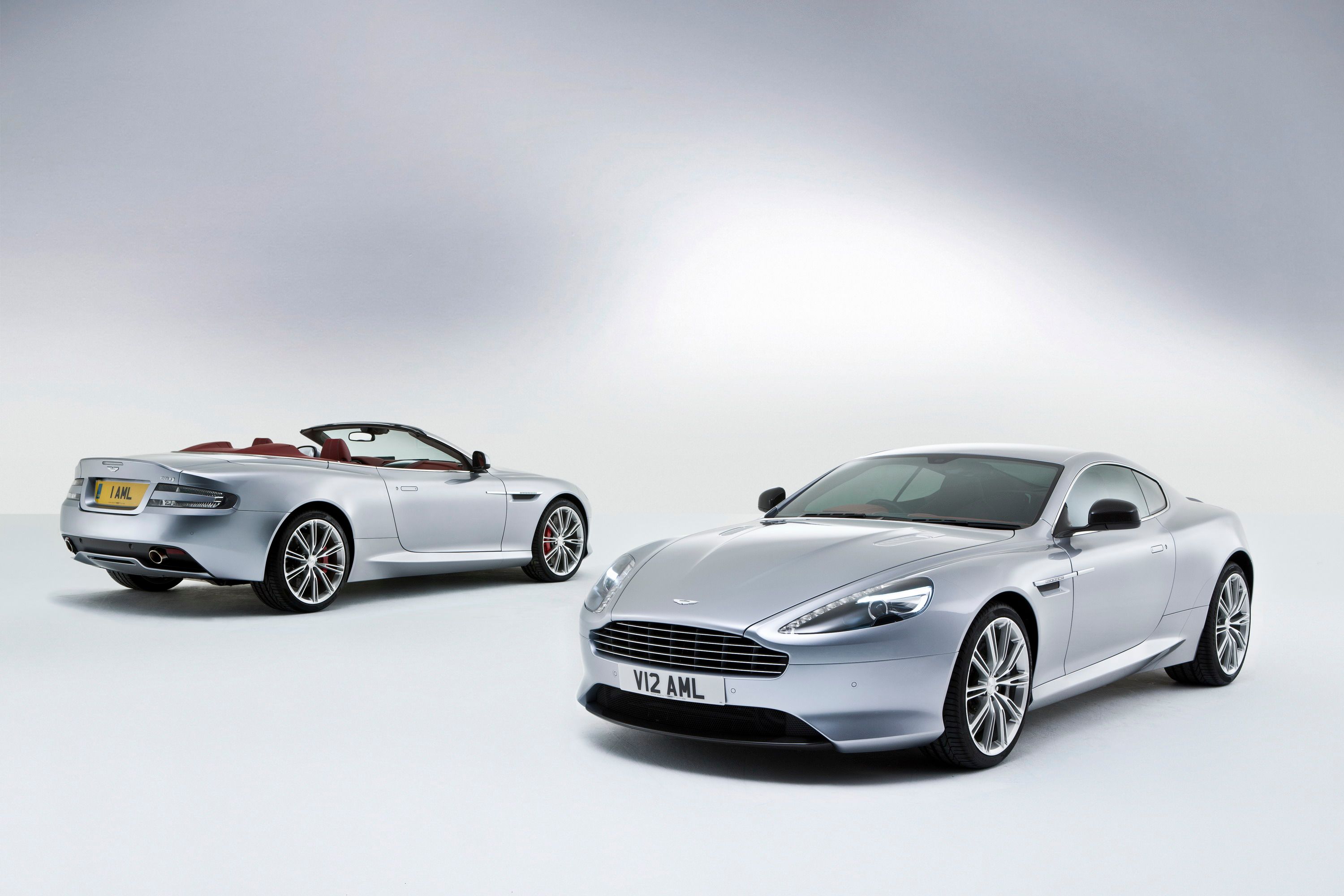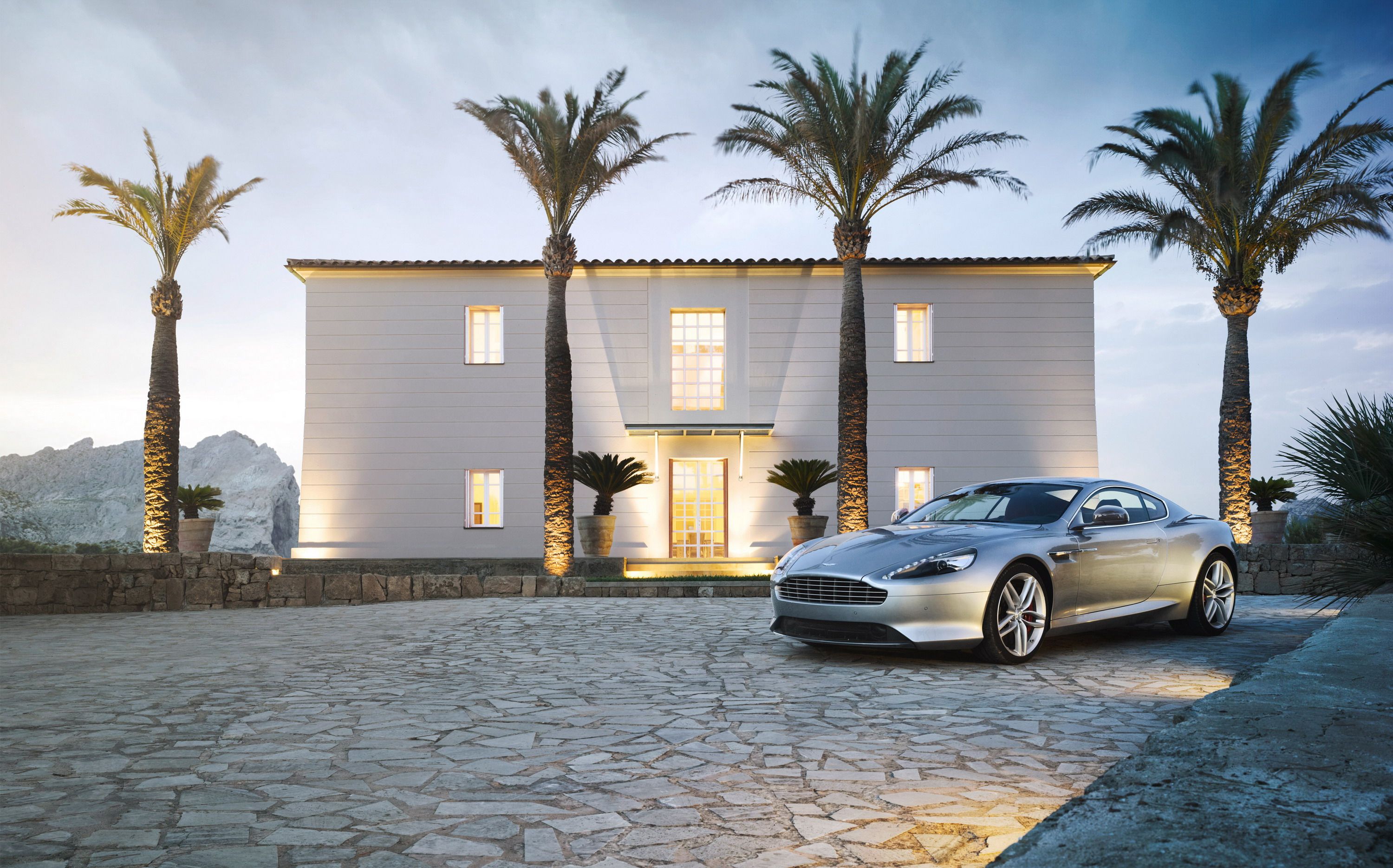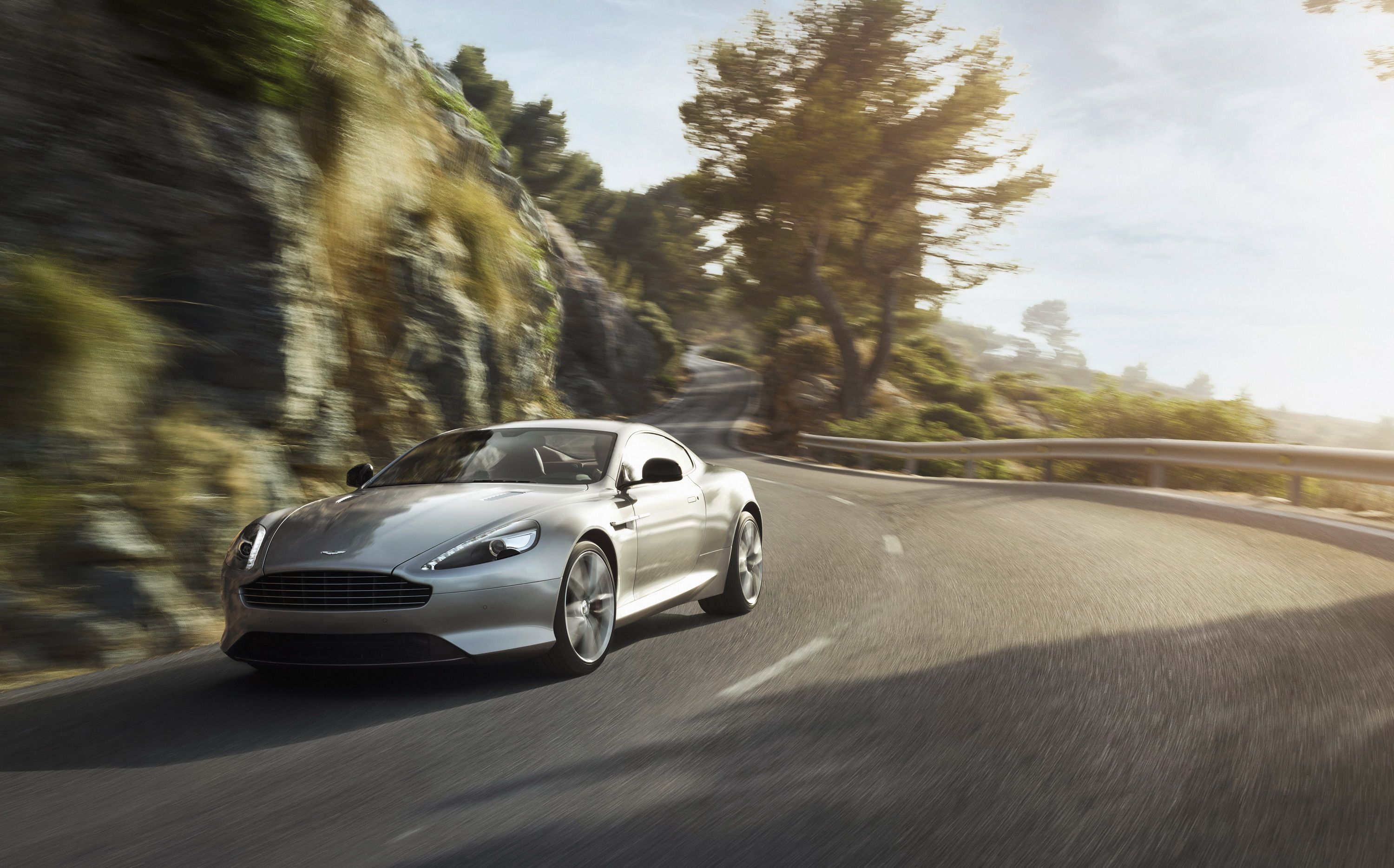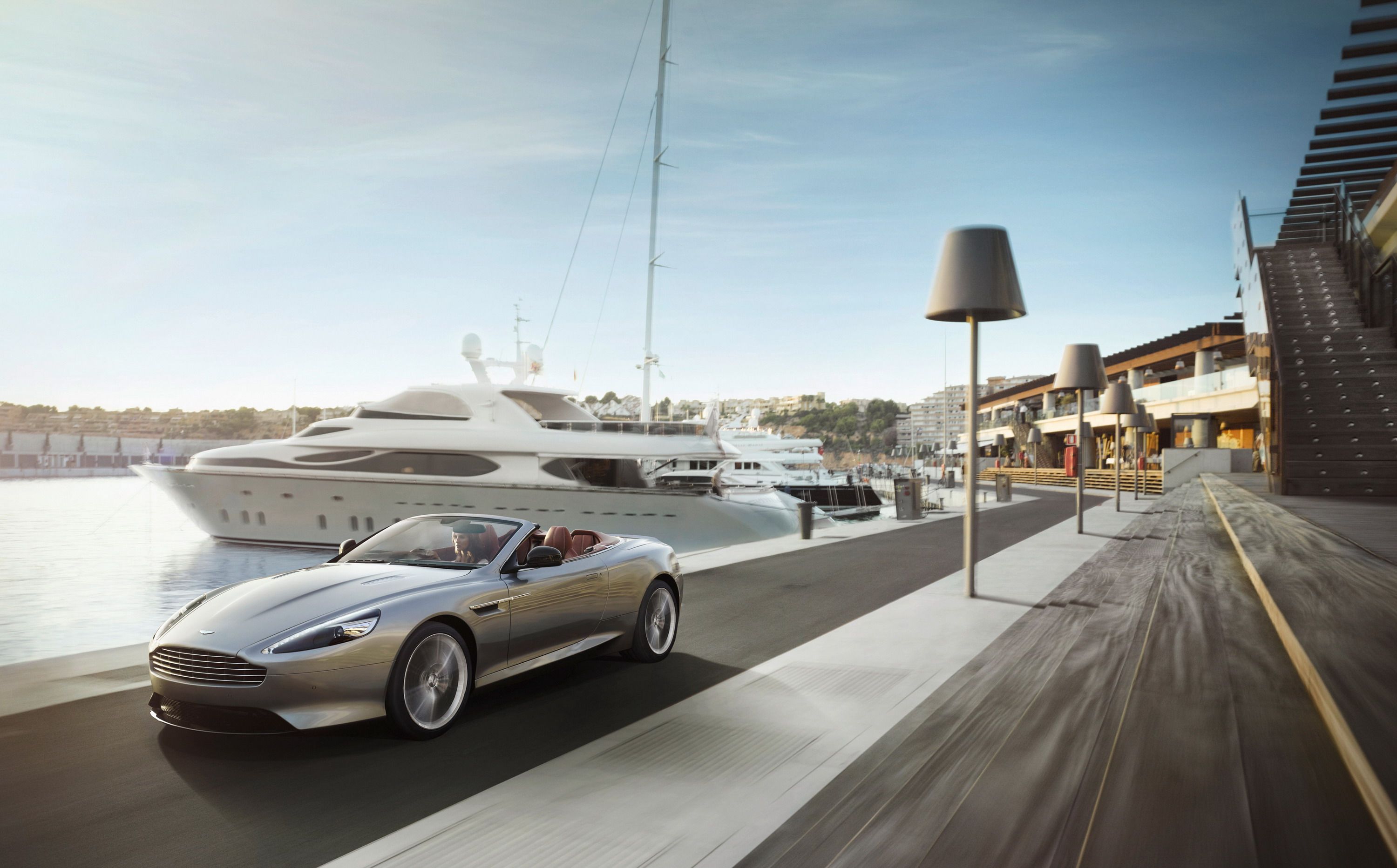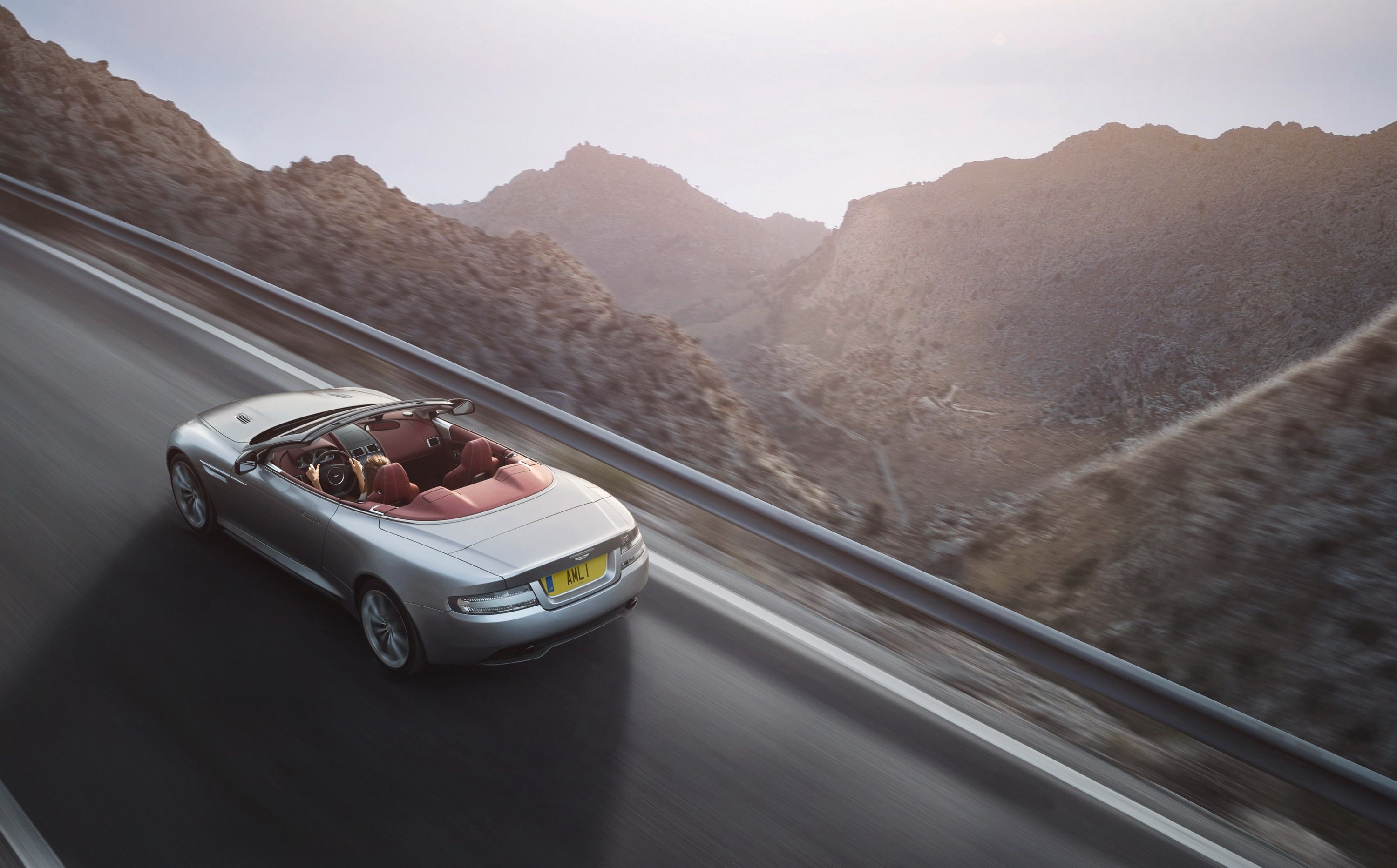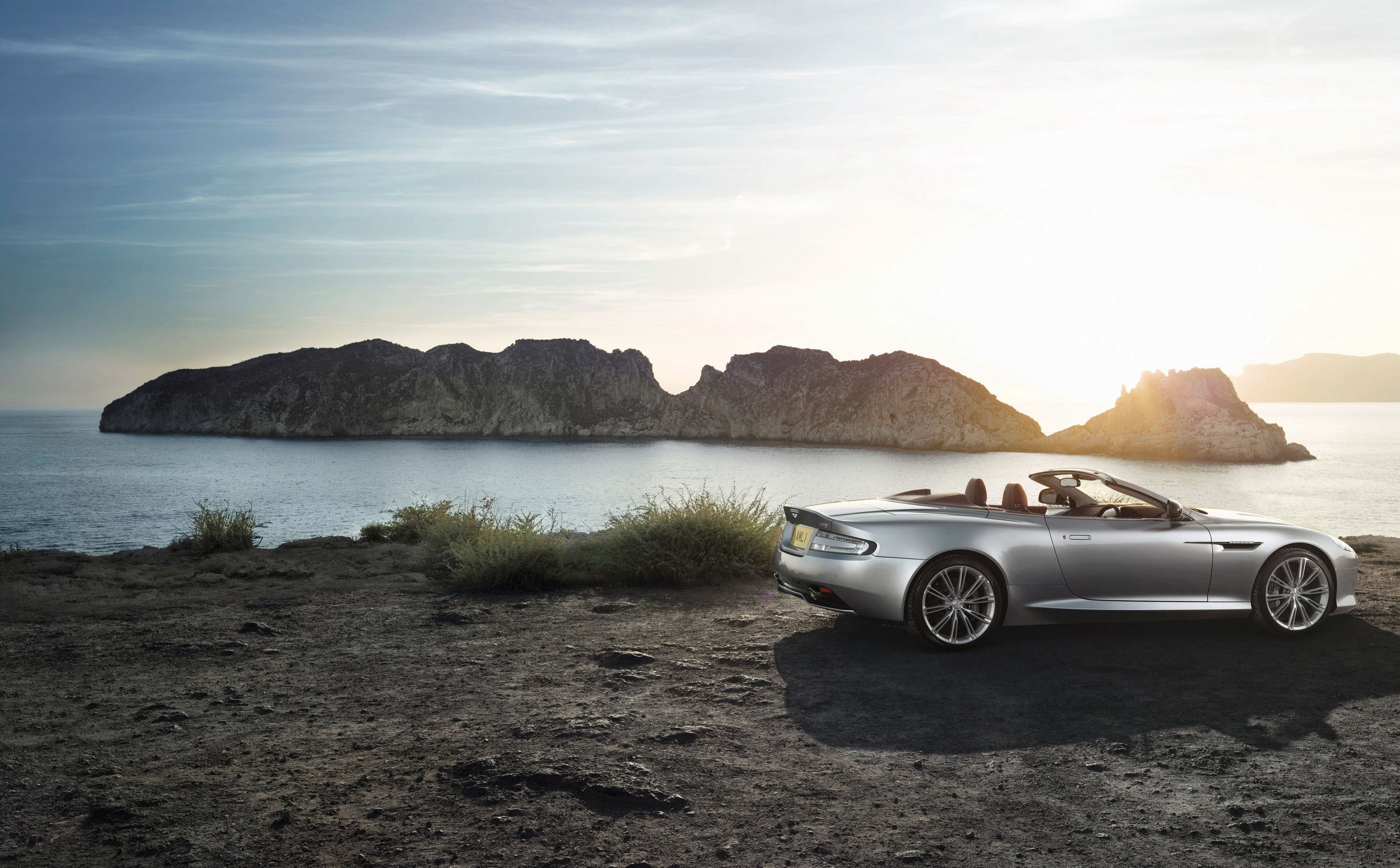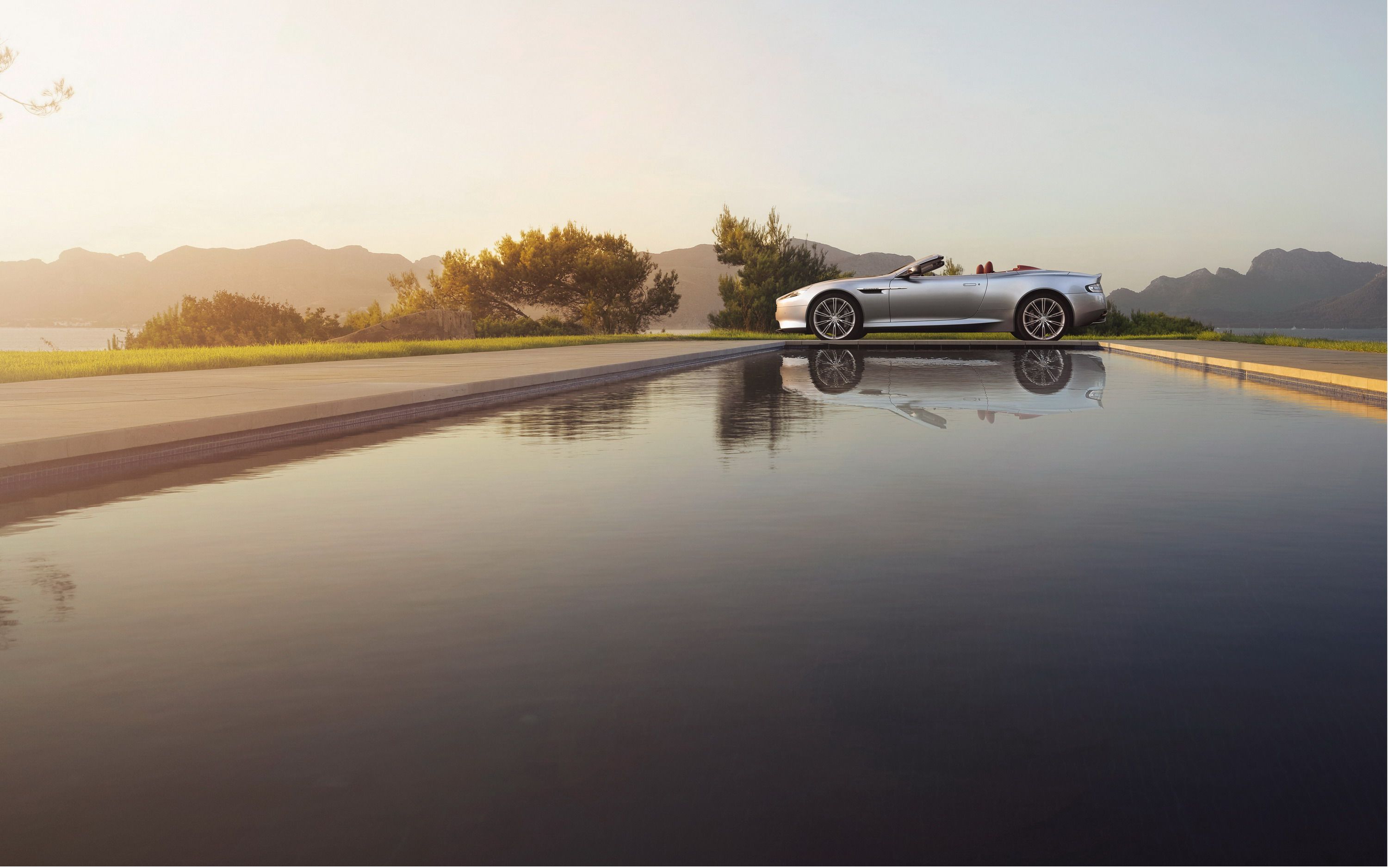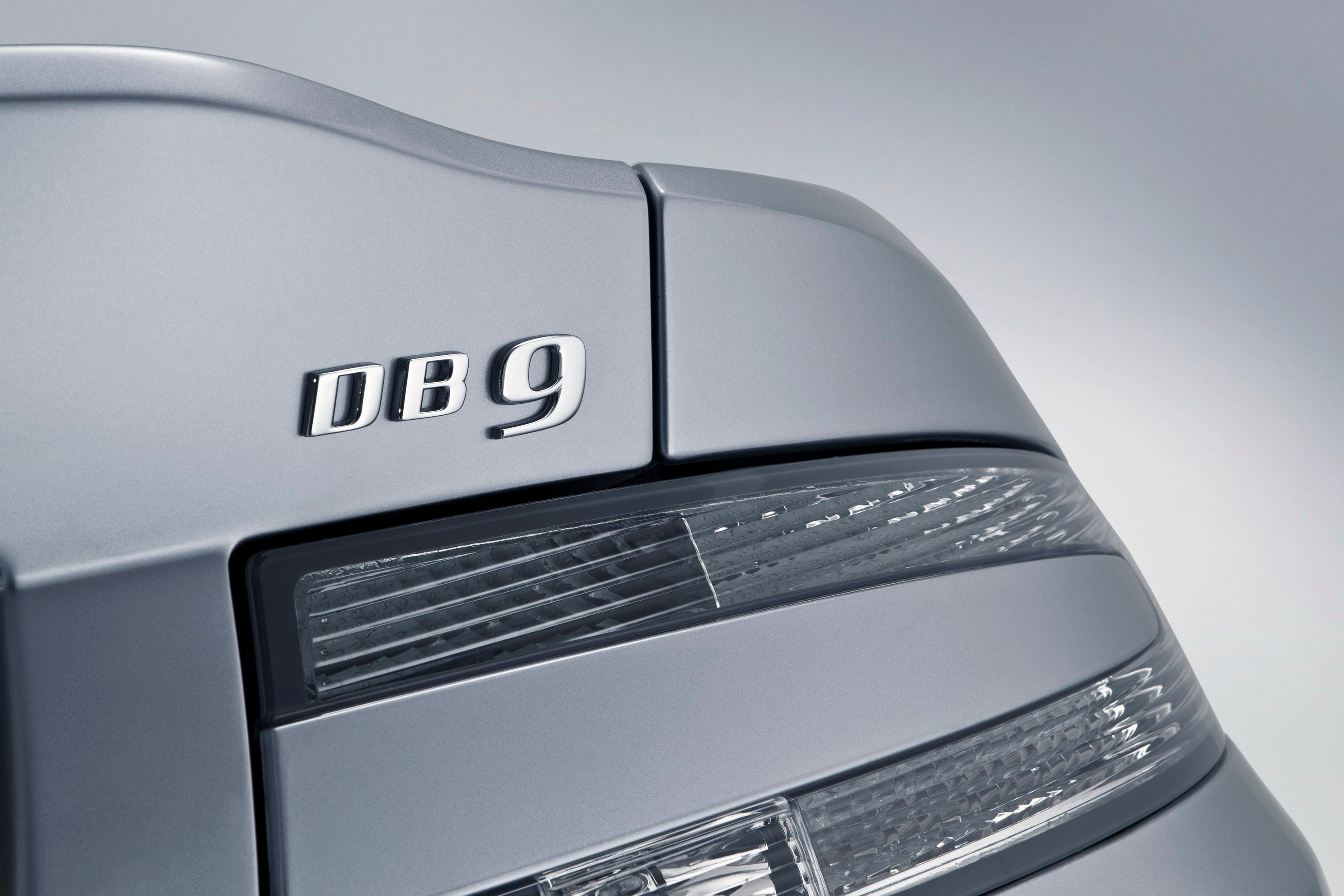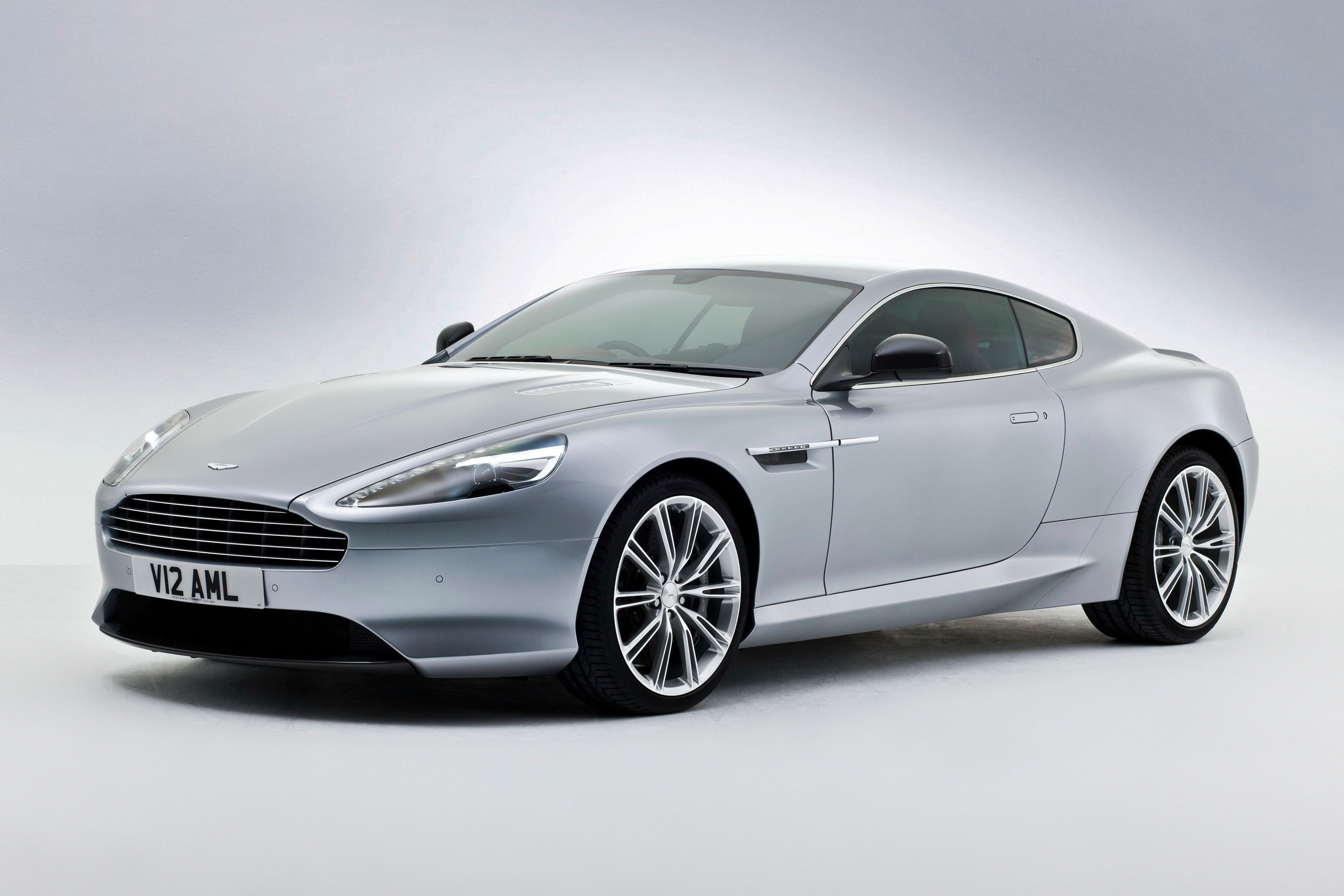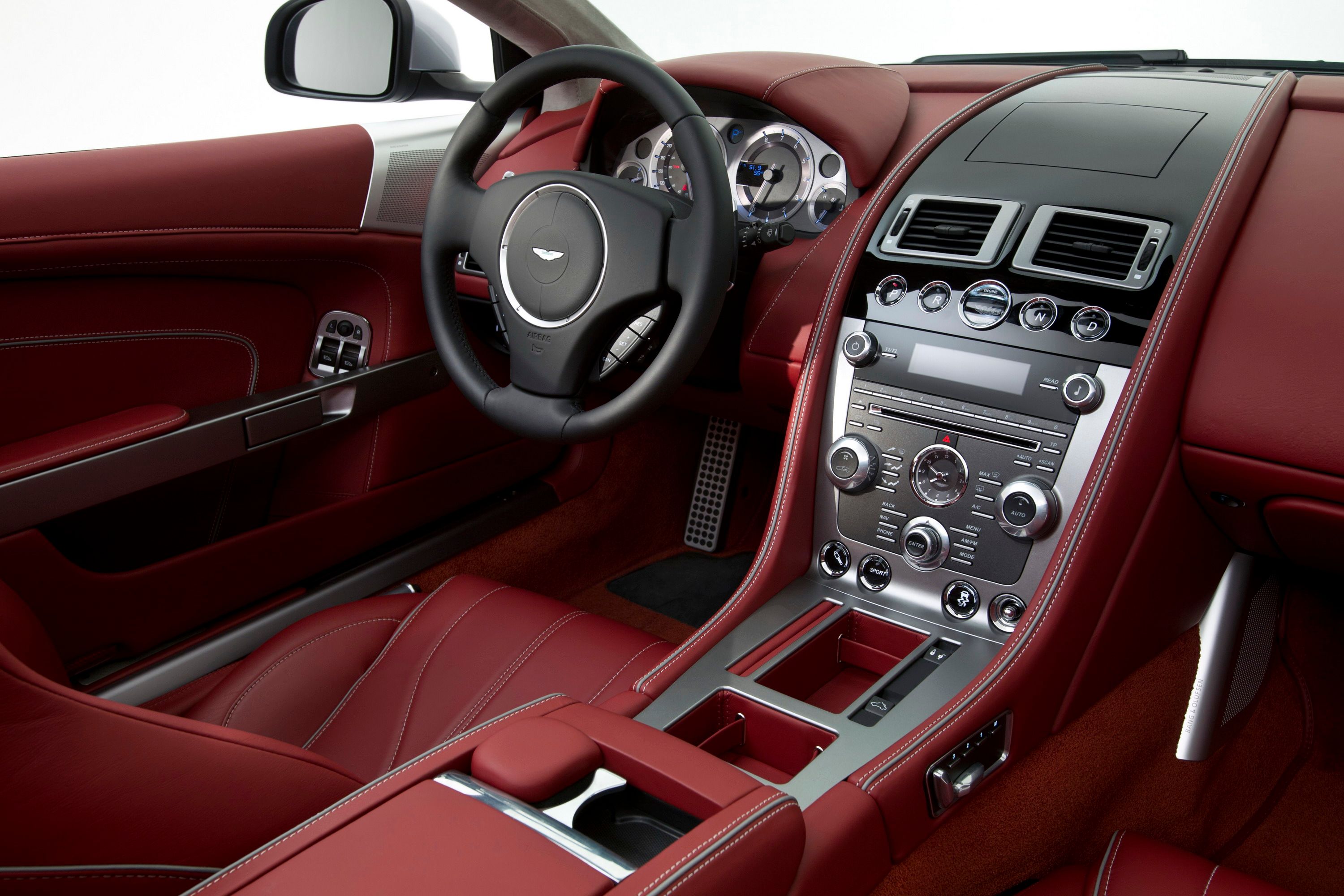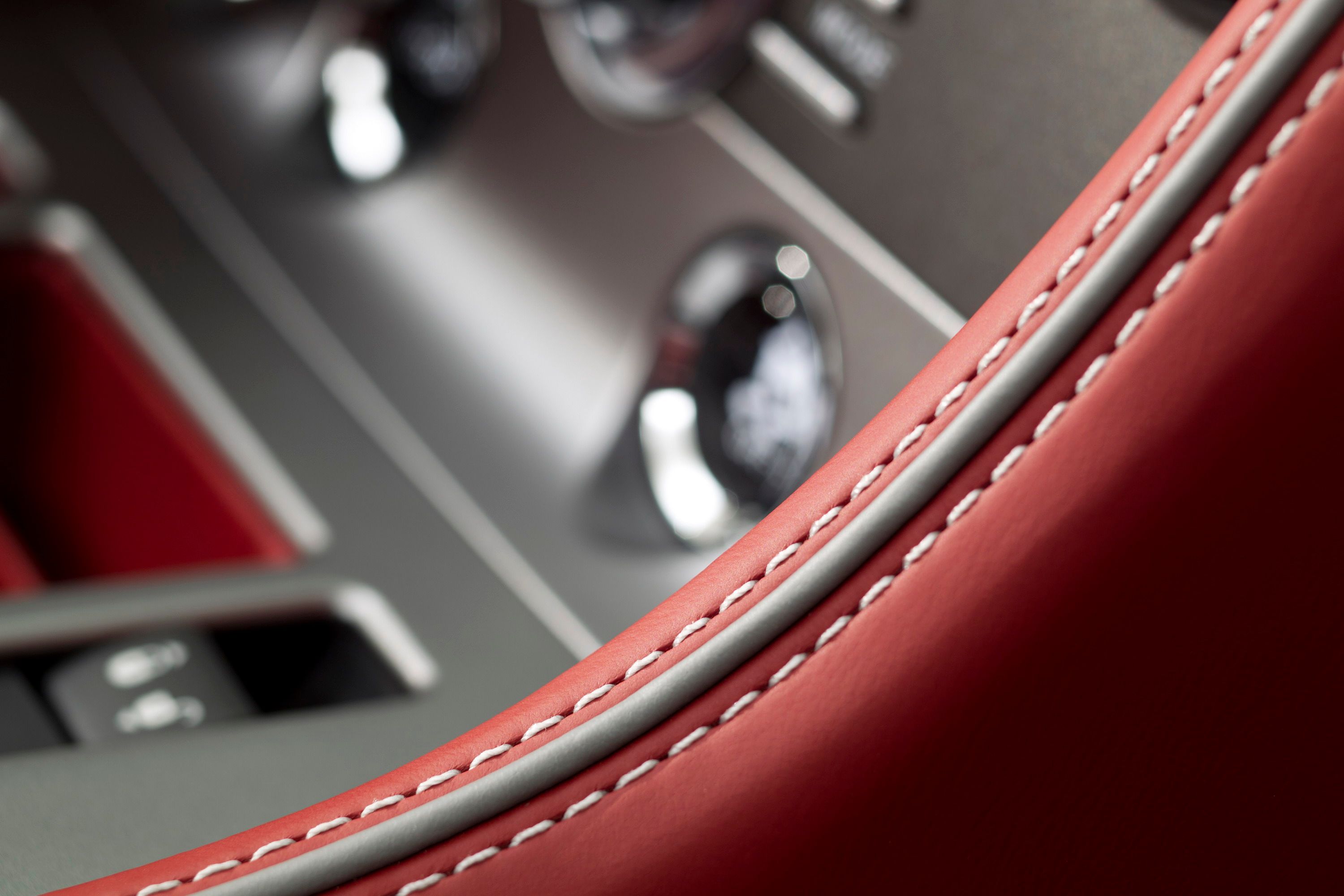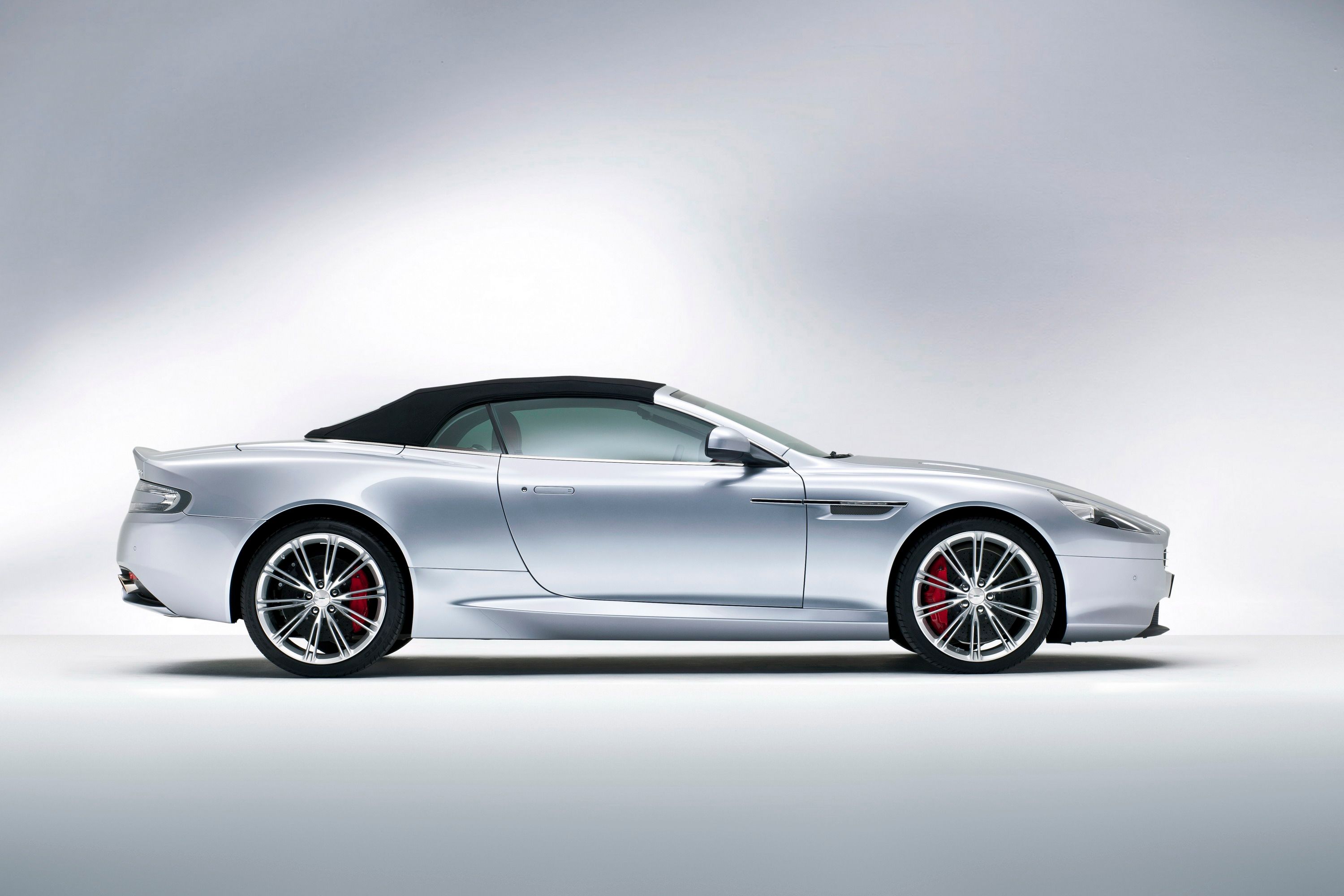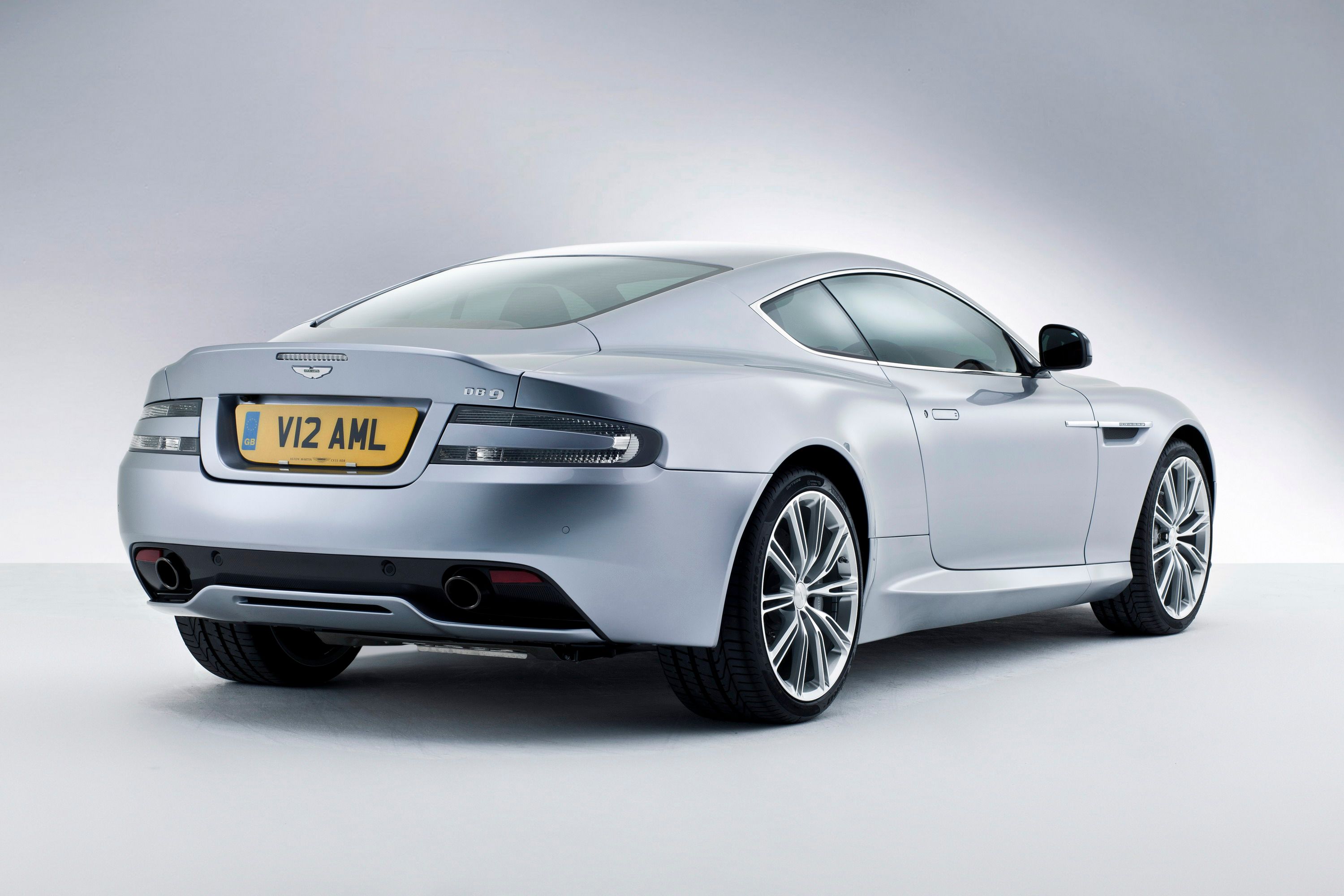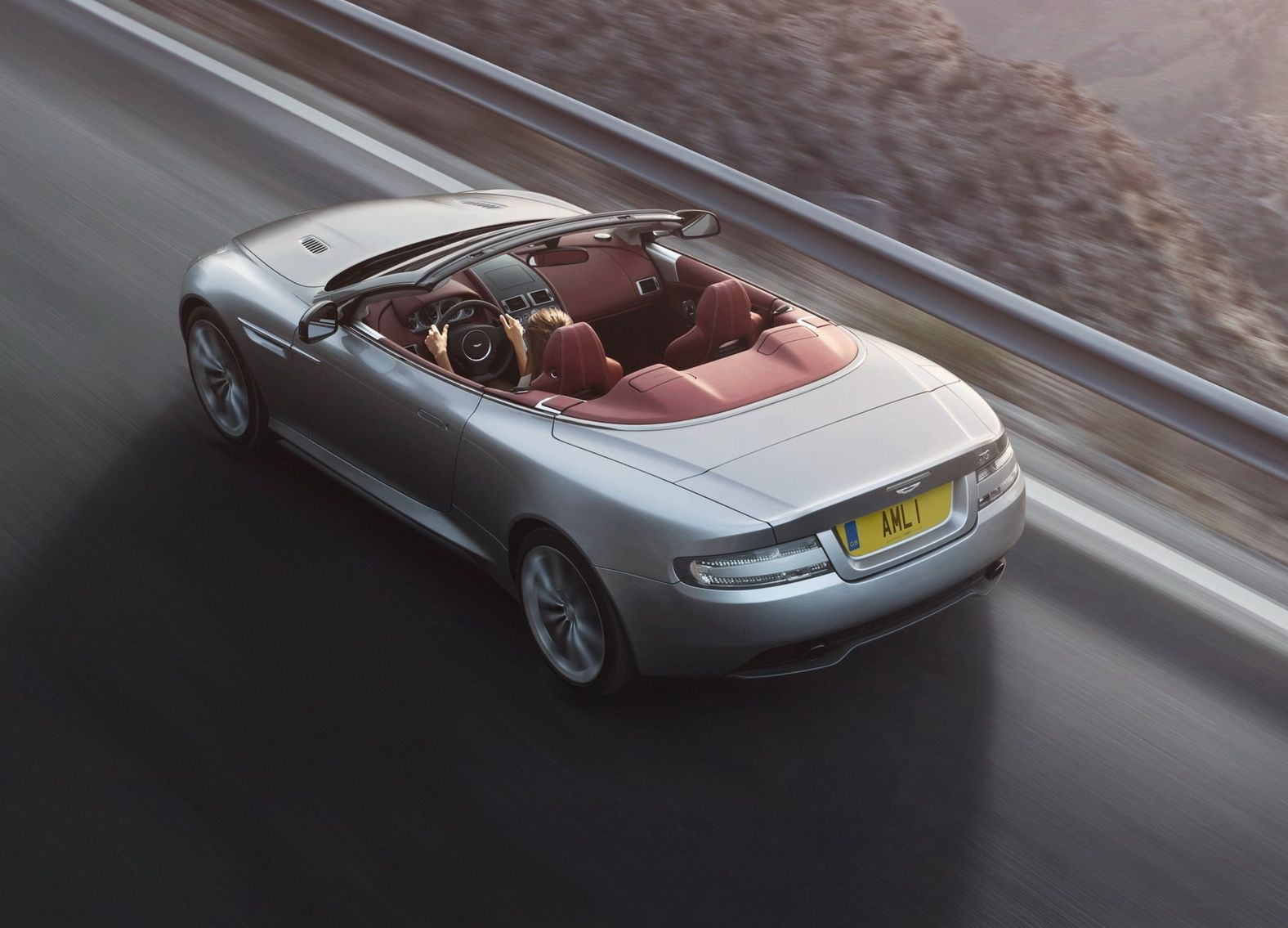When the DB9->ke210 hit the market in the 2005 model year, we loved what Aston had done with it, as it took its 1950s and 60s predecessors and just modernized it -- a brilliant concept. Well, the DB9 went through a few minor changes in the 200s, namely a boost from a 449-horsepower, 412 pound-feet V-12 to a 470-horsepower, 443 pound-feet V-12 engine. Other than that, the DB9 has been basically a carryover and is well overdue for a mild upgrade, which we have been speculating about for a while now.
Finally, Aston Martin->ke13 has given into our prying selves and has released some information on the upcoming revisions to the DB9 for the 2013 model year. Keep in mind here, Aston Martin, like many sports car and supercar builders, are not keen on changing things around just for the sake of change. So we do not expect to see any massive styling changes, only small tweaks here and there to make it sleeker and more stylish, so it remains up to date.
Aston Martin Chief Executive Officer Dr. Ulrich Bez certainly feels good about the revised DB9, as he said: "I am very excited to be unveiling the new DB9 now. My team here at Gaydon has been working hard for many months to improve and update key aspects of this superb Sports GT – the mainstay of our sports car range – and I believe the results to be exceptional."
Well, with all due respect to Dr. Bez, and he deserves plenty, we will have to take a look at this revision and just see how “exceptional” it really is. We have certainly seen some redesign bombs in the last few years, so let’s hope that the DB9 is not one of them.
Click past the jump to read our full review on this all-new DB9 and see if it lives up to the level that Dr. Bez is telling us it does.
2013 Aston Martin DB9
- Make: Array
- Model: 2013 Aston Martin DB9
- Engine/Motor: V12
- Horsepower: 510 @ 6500
- Torque: 457 @ 5500
- [do not use] Vehicle Model: Array
Exterior
As we said, Aston would not totally scrap the body of the successful DB9, rather it just tweaked it a little here and there – call it a little mid-life nip-and-tuck detail. The basic silhouette of this famed GT sports car remains, with its sloped nose, swooping roofline, and its short trunk all making the cut for the 2013 model year. Also carried over, as expected, are the two main body styles, the coupe and volante (convertible).
Where we see the differences are in the little places and there are even a few of these slight changes that have some serious effect on the DB9’s overall performance. Up front, you get revised headlights that boast bi-Xenon bulbs. These headlights have been slightly stretched toward the front and rear since last year and the ends given a sharper point. Also added to the headlights are several bold lines that run along and underneath the headlights, making the front end look a little more stout than it did last year.
Between these revised headlights sits the traditional 5-bar Aston Martin grille, each of the five bars have beveled edges to create and airfoil profile. Just below this slightly revised grille sits the front splitter to add a little extra down-force to the front end, plus it leaves the DB9 with a more open smile that widens the appearance of it. If you like, you can opt for the Carbon Pack, which adds in a carbon-fiber splitter in the place of the stock one, lightening the car and giving it a more sporting appearance. We’ll get more into the Carbon Pack in a bit.
As you progress down the sides of the DB9 you’ll find that the engine heat extractors are still prominent on the front fenders, but they are sleeker and more refined than the previous DB9. No longer is there a strikethrough splitting these extractors into upper and lower hemispheres. Now the extractors are free to breathe as normal and zinc vanes ride along the top edge of them. Theses vanes, which also house the side repeaters, actually progress down the front fenders and taper off as they proceed down the first quarter of the doors, giving the DB9 a fast look just sitting in a parking space or stop light.
If you step to the side of the DB9 you’ll find that the airflow has very little resistance as it flows over the sloped hood and swooping roof. As the airflow heads to the rear end, it will encounter a new surprise that Aston Martin added for the 2013 model year. The air it tossed upward by a spoiler integrated onto the trunk lid to create a little extra downward push on the rear axle.
At the corners, Aston Martin will fit a set of 20-inch alloy wheels. As per usual with Aston Martin, there are more rims to choose from than you can shake a handful of 100-dollar bills at, so you are free to express yourself thought the rims as you see fit.
The rear end looks like it is almost completely a carryover from last year, but there is one minor difference: the rear diffuser is now shapelier, giving the lower portion of the rear end a sportier look.
As we said before, Aston Martin is bringing the Carbon Pack along for the ride into the 2013 model year. The exterior Carbon Pack includes a nice selection of pieces, including:
-Carbon fiber front splitter
-Carbon fiber rear diffuser
-Carbon fiber mirror arms
-Carbon fiber mirror housings
-Dark tailpipes with a graphic finish
Each carbon-fiber piece is done in 2 x 2 twill design – the standard in carbon-fiber weave – and coated in a clear lacquer to give it a slight sheen.
On the outside, Aston Martin did it right when it comes to this redesign. It took the weaknesses of the 2012 DB9 and made them the strengths and strengthened the already good features. Some of the key changes that really improve upon the 2012 model year are the more stylish and sporting headlights, elimination of the cheap-looking front splitter from 2012, reforming of the rear spoiler, and the change to a zinc line over top of the heat extractors as opposed to the old strikethrough design.
Exterior Dimensions:
|
Length x Width x Height |
4,720 mm (185 inches) x 2,061 mm (81.14 inches) x 1,282 mm (50.47 inches) |
|
Wheelbase |
2,740 mm (107 inches) |
|
Curb Weight |
1,785 kg (3,935 pounds) |
|
Standard Exterior Features |
|
Two-door coupe body style with 2+2 seating configuration |
|
Extruded bonded aluminum VH body structure |
|
Aluminum, magnesium alloy and composite body |
|
Extruded aluminum door side-impact beams |
|
Single bi-xenon headlamps with integrated LED side lights and direction indicators |
|
Clear LED rear lamps |
|
20-inch five-spoke cast alloy silver painted wheels |
Interior
The exterior is not the only part of the new Aston Martin DB9 that got some reworking, as the interior got a fairly decent overhaul too. Not only is the interior elegant, but it also boasts some of the finest materials you will likely ever see grace the interior of any other car.
Aston borrowed the awesome leather first used on the Virage, which is officially going away. This leather requires masterful crafting and hand stitching to get it absolutely perfect. This process uses a narrow strip of leather between two opposing leather panels and the two opposing panels are stitched together, creating a soft, yet strong feel.
The interior is also graced with a plethora of jewel-like glass switches, which give you all of the control you need while keeping the cluttering to a minimum – something many car manufacturers fail at. Even without the use of glass, the beautifully appointed black and silver center stack is neatly laid out with the buttons placed well within the driver’s reach and they are far from overwhelming. The only complaint here is that some of the buttons appear to be very small.
The driver’s center is neatly appointed, with the steering wheel only housing several controls and the silver-backed instruments are in clear sight. The door panels, dashboard, and center console all don the same beautiful treatment as the gorgeous leather-trimmed seats, giving the interior a clean look that just looks like it belongs in an Aston Martin. The use of lightly contrasting colors is also exquisite, as they add a little style without making it look overwhelming.
If you’re looking for a little sportier feel to your 2013 DB9, you can opt for its 2 + 0 seating package, which eliminates the +2 seats in the rear and replaces the front seats with the lightweight seats. These Kevlar and carbon-fiber seats not only provide better back and neck support, but they also knock 17 kg (37 lbs) off of the car’s total weight.
To help cap off the luxurious look and feel of the Aston Martin DB9’s interior, you can opt for a leather headliner, which boasts a leather center with Alcantara-colored outer rail.
Just like with the exterior, you can opt for a Carbon Pack for the interior, which includes:
-Carbon-fiber upper fascia,
-Carbon-fiber gear selector paddles
-Carbon-fiber door pulls.
Overall, the interior of the Aston Martin DB9 simply stuns us. Not only is it well put together, but extremely well throughout. Everything has a nice and neat place and nothing is really in the way of distracting. The leather throughout its cabin is also very nicely done, giving it the look that an Aston Martin needs to have.
|
Standard Interior Features |
|
Full-grain leather interior |
|
Walnut fascia trim with graphite center console finish and iridium silver surround |
|
Leather sports steering wheel |
|
Electrically adjustable sports seats with side airbags |
|
Memory seats & exterior mirrors (three positions) |
|
Dual-stage driver/front passenger front airbags |
|
Powerfold exterior heated mirrors |
|
Heated front seats (sports seats only) |
|
Heated rear screen |
|
Automatic temperature control |
|
Organic Electroluminescent (OEL) displays |
|
Trip computer |
|
Cruise control |
|
Bluetooth telephone preparation |
|
Satellite navigation |
|
Auto-dimming interior rear-view mirror |
|
Auto-dimming interior rear-view mirror with garage door opener (USA and Canada only) |
|
Satellite radio system (USA only) |
|
Front and rear parking sensors |
|
Tyre pressure monitoring system |
|
Alarm and immobilizer |
|
Remote-control central door locking and boot release |
|
Glass ECU |
|
Tracking device (UK only) |
|
LED map-reading lights |
|
Boot-mounted umbrella |
|
Lamy pen and pen holder |
|
700-watt Aston Martin Premium audio system with Dolby Pro Logic II including six-CD autochanger |
|
Integrated Apple iPod connector |
|
USB Connector with Waveform Audio Format (WAF), Windows Media Audio (WMA) and MPEG (MP3) audio file compatibility |
|
3.5 mm auxiliary input socket |
Engine and Drivetrain
The 2013 DB9 will debut with an all-new hunk of hardware under its hood, in the form of the AM11 V-12 engine. This 5,935 cc V-12 engine features an all-alloy block, so it is not either you traditional cast-iron or all-aluminum block, likely taking the best of both worlds. Dual variable valve timing helps the V-12 inhale and exhale more effectively by changing all four cam profiles on the fly to compensate for your style of driving. Aston Martin also enlarged the throttle body on the V-12 engine, gave it a higher-capacity fuel pump, smoothed out the intake manifold for freer flow, and machined the combustion chambers for a more effective use of the force created by the exploding fuel and air. Also included is a full-stainless-steel exhaust system with active bypass valves to change the tone and flow of the exhaust, as needed.
All of these improvements helped squeeze 510 horsepower (517 PS) at 6,500 rpm and 457 pound-feet (620 Nm) of torque at 5,500 rpm form this impressive V-12 engine.
The transmission actually sits at the rear of the vehicle and is known as the Touchtronic 2 model. It boasts a total of six speeds and uses an electric wire to shift through the gears, as opposed to the traditional cable-and-lever system. The transmission sends torque to the rear wheels via a pair of alloy tubes with carbon-fiber propeller shafts through a limited-slip differential. Said differential has a 3.46-to-1 gear ration, giving it a nice balance of effective torque and top speed.
All of this technology translates into respectable numbers on the track, as the 2013 DB9 will zip to 100 km/h (62 mph) in just 4.6 seconds and it has a top speed of 183 mph. A slightly higher gear ratio may be a nice option in the future for those that want to get that 0-to-60 time closer to the 4-second mark, but it will drop the top speed a little. There is no evidence that such an option will ever be offered though.
Engine and Drivetrain Specifications:
|
Engine |
5,935 cc V-12 |
|
Horsepower |
510 horsepower at 6,500 |
|
Torque |
457 pound-feet at 5,500 |
|
Transmission |
Six-speed Touchtronic 2 |
|
Final Drive Ratio |
3.46-to-1 |
|
0-to-100 km/h (62 mph) |
4.6 seconds |
|
Top Speed |
183 mph |
Handling and Braking
Going fast is all well and good, but being able to control that speed is the name of the game. Aston Martin took great strides in making sure that the DB9 handles and stops better than the previous generation – not that last year’s model was a slouch.
Aston began by scrapping the brakes from last year’s model and adding in all new Carbon Ceramic Matrix (CCM) brakes and a set of Brembo calipers. These CCM brakes use a specific blend of carbon fiber and silicon to create an all-new compound that it not only more durable than the standard iron or steel discs, but much lighter weight – up to 12.5 kg (27.5 lbs) lighter than a conventional setup – and more resistant to brake fading. The durability and brake-fade resistant qualities are obvious in braking, but the weight savings is often overlooked. Rotors sit outside of the springs and are thereby can cause the spring to excessively bounce up and down. The heavier the brakes, the more bounce; the more bounce the worse the car handles – simple as that.
The front discs measure in at a stout 398 mm (15.66 inches) in diameter and get squeezed by a set of 6-piston monobloc Brembo caliper. The rear CCM discs use a set of 4-pot monobloc Brembo calipers and measure in at 360 mm (14.17 inches). Also included, as per usual on these types of cars is: anti-lock brakes, electronic brake-force distribution, emergency brake assistance and the federally mandated traction control.
To further enhance the braking system, Aston Martin went ahead and cross-drilled the rotors – act of putting small holes through the friction portion of the rotors – which helps wipe away loose friction material from the pads and help dissipate heat. To accelerate the cooling process, the brakes also boast air intakes behind the lower, front grille.
In the suspension system you have a pretty standard setup, including independent front suspension with dual wishbones, coil springs, anti-roll bars and monotube dampers. On the rear, you have the same, but it adds in anti-squat and anti-lift technology to keep that backside in check under heavy acceleration or braking.
Where the 2013 DB9 gets unique is its inclusion of the "Gen4" VH architecture version of the brand’s Adaptive Damping System (ADS). The new ADS includes three modes: Normal, Sport and Track. The “Normal” mode is what you’ll typically be cruising around town in. Under normal driving, this model allows the dampers to calmly absorb the jarring caused by road imperfections. However, in “Normal” model, the ADS will adjust the dampers to compensate for high-speed movement and road surface quality on the fly.
In the “Sport” mode the dampers deliver more precise movements and allow you to quickly make maneuvers with little body roll. You, of course, must sacrifice a little ride comfort for this increase. “Track” mode is like “Sport” but on steroids. It gives you precise movement and excellent feedback. It sets the dampers at their stiffest setting and allows you to really feel the road – one of the keys to a good-handling car.
With the dampers and suspension geometry keeping the rubber on the road, let’s have a look at this rubber. At the corners you get a set of 8.5J x 20-inch wheels wrapped up in 245/35ZR20 Pirelli rubber up front and a set of 11J x 20-inch wheel embraced by a set of 295/30ZR20 Pirelli P Zero rubber. While these tires may not be the monsters that you’re used to seeing on import sports cars, you’ll be happy to find that this will save you a little cash come tire-replacement time.
Chassis and Suspension Specifications:
|
Front Suspension |
Dual wishbone with coil springs, anti-roll bars and adaptive monotube dampers |
|
Rear Suspension |
Dual wishbone with coil springs, anti-roll bars, anti-lift and anti-squat technology, and adaptive monotube dampers |
|
Front Brakes |
398 mm (15.66-inch) CCM cross-drilled rotors w/ 6-piston monobloc calipers |
|
Rear Brakes |
360 mm (14.17-inch) CCM cross-drilled rotors w/ 4-piston monobloc calipers |
|
Wheels |
Front: 8.5J x 20-inch / Rear: 11J x 20-inch |
|
Tires |
Front: 245/35ZR20 Pirelli P Zero / Rear: 295/30ZR20 Pirelli P Zero |
Pricing, Release Date, and Optional Equipment
Luckily, the 2013 DB9 is officially ready for sale in most markets – the UK and Western European markets will see it in October 2012 – and you can snag one up at your local Aston Dealership. What’s more is that you are actually going to see a slight decrease in the DB9’s pricing when compared to the $189,915 set for the 2012 model year – if you’re in the U.S.
Base MSRP details:
|
United Kingdom |
£131,995 |
|
Germany |
€174,994 |
|
United States |
$185,400 |
|
Japan |
¥21,995,000 |
|
Optional Equipment |
|
Volante body style |
|
20-inch five-spoke alloy graphite painted wheels with diamond-turned finish |
|
20-inch ten-spoke alloy Liquid Silver painted wheels |
|
20-inch ten-spoke alloy silver painted wheels with diamond-turned finish |
|
20-inch ten-spoke alloy graphite painted wheels with diamond-turned finish |
|
20-inch ten-spoke alloy Satin Black painted wheels with diamond-turned finish |
|
Alternative brake caliper finish – black, red, and yellow |
|
Exterior Carbon Fibre Pack (comprising front splitter, rear diffuser, mirror cap, mirror arm and graphitic tailpipe finish) |
|
2+0 Seating (Coupe only) |
|
Lightweight seats with six-way electrical adjustment (must be ordered in conjunction with 2+0 seating configuration, not available with heated seats feature) |
|
Optional facia trims - Piano Black, bamboo, tamo ash, mahogany |
|
Black Alcantara Steering Wheel |
|
Matching wood door trim (not available with B&O BeoSound audio system options) |
|
Personalised sill plaques |
|
1000-watt Bang & Olufsen BeoSound audio system with ICEpower technology |
|
Auto-dimming interior rear-view mirror |
|
Auto-dimming interior rear-view mirror with garage door opener |
|
Alarm upgrade (volumetric and tilt sensor) |
|
Satellite radio system (Canada only) (excludes subscription} |
|
Tracking device (UK category five) |
|
First-aid kit |
|
Trinket tray |
|
Satellite radio system |
|
Second Glass ECU |
|
Rear Parking Assist Camera |
|
Interior Carbon Fibre Pack (comprising facia trim, gearshift paddles and door pulls) |
|
DB9 logo or Aston Martin wings embroidery on front seat headrests |
|
Leather headlining |
|
Smokers’ kit |
|
Contemporary Pack (comprising contemporary paint, contemporary leather, contemporary carpet, leather headlining, contrast stitching) |
Competition
The list of competitors for the DB9 goes on and on, but we can only look at a few here. First up is the Audi R8 4.2 with its impressive V-8 engine that pumps out 430-horsepower, 317 pound-feet of torque. This car screams to 60 mph in just 4.5 seconds, 0.1 seconds faster than the DB9. With its AWD system and $114,200 base price, the R8 is a worthy foe, but with its lack of +2 seats in the rear and sports-centric styling, it simply falls short of the full package that the DB9 provides us.
Next up on the list would be the Jaguar XKR-S. This beast packs a mean punch with its 550-horsepower supercharged 5.0-liter V-8 engine, plus it comes in at a relative budget at $132,000. This is enough to push this beast to 60 mph in 0.1 seconds less than the DB9. The interior and exterior styling on the XKR-S both match up well with the DB9, and we actually prefer the slightly edgier design that the Jag affords us. Both models fit four adults, though not very comfortably, but the glaring issue with Jaguar is its ongoing quality issues. In the past, we have seen some Jags limping into shops with less than 100K miles and big-time issues. So you need to keep this in mind when thinking about the $50K you’ll save over the Aston Martin.
Finally, let’s have a look at the Maserati GranTurismo MC with its 4.70liter V-8 engine that cranks out 44 horsepower and 376 pound-feet of torque. This beast sends its power through a 6-speed shiftable automatic trans to the rear wheels and can hit 60 mph in about 4.8 seconds – 0.2 seconds slower than the DB9. On the outside, the Maserati is kind of “Blah,” as it looks much like any other sports car in the world. The Maserati receives rave reviews about its interior comfort, but it’s also a lot more cluttered and kind of old looking when compared to the Aston Martin. At $139,900, we think the Maserati is priced well for the market, but not for what you get with it.
Conclusion
We love the DB9, but it is extremely expensive. Having said that, you are getting a luxury car with the highest end of everything and a car that can perform with the best of them and give you the comfort you deserve. Sure, it’s not going to hit 60 mpg in 2.5 seconds or take the slalom at 70 mph, but that’s not its bag. It’s there to look good and perform well, and that’s exactly what it does. What you need to do is decide if you are willing to part with a little extra cash to get into the Aston Martin, or take the build-quality gamble with the Jaguar XKR-S.
Your choice…


